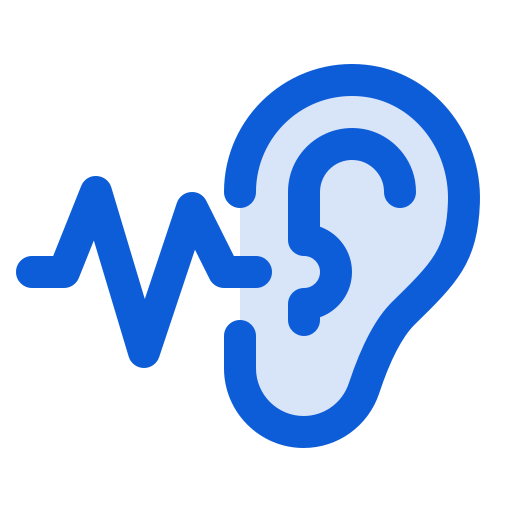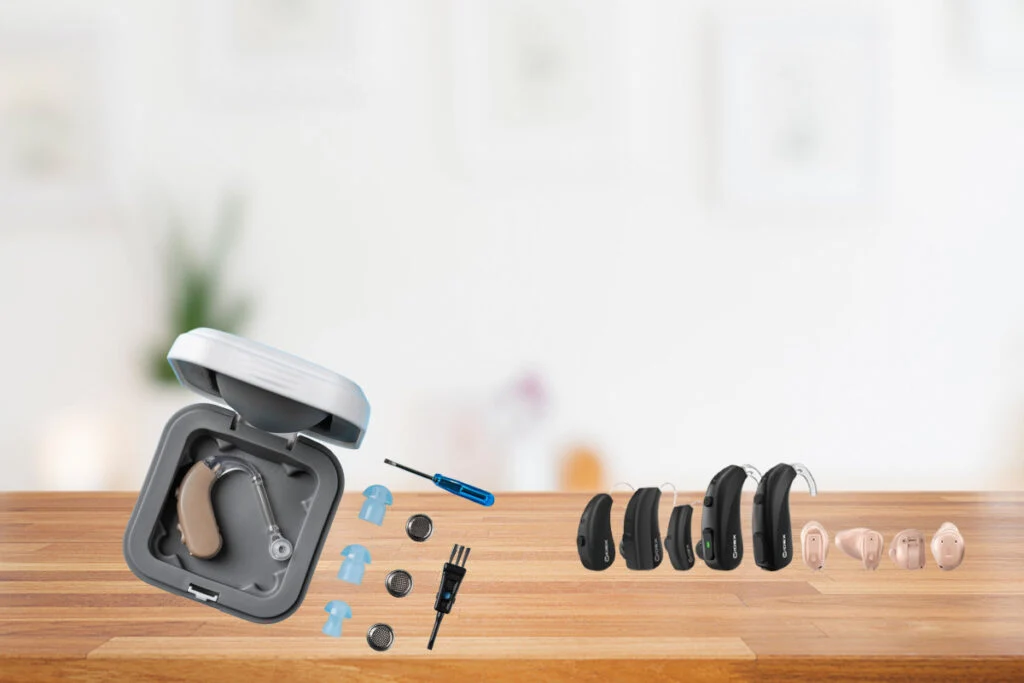When it comes to hearing aids, it improve the quality of life for those facing the problem of hearing loss. To secure performance and longevity, a variety of accessories are essential. In this blog, we can explore hearing aid accessories, focusing on essential hearing aid tools and their maintenance tips to help in choosing the best hearing aid accessories.
-
Cleaning Kits
Hearing aid cleaning kits are provided to maintain the hygiene of your hearing aids and it ensures that you hearing aid functions properly. The kit contains tools like brushes, wax picks, and cleaning wipes. It is important to clean your hearing aids regularly as it prevents earwax and and debris from clogging the hearing aid elements.
- Brushes: Used to remove the earwax and dust from the hearing aid surfaces or sound ports.
- Wax Picks: It’s essential for removing stubborn wax buildup from a small opening.
- Cleaning wipes: It is used to sanitize and clean your hearing aids and to keep it from bacteria and gems.
-
Hearing Aid Dryers and Dehumidifiers
Every hearing aid is prone to accumulating moisture,which damages and affects the performance of your hearing aid. Hearing aid dehumidifiers and dryers help to remove dust or moisture from the device, ensuring the work is functional.
- Electronic Dehumidifiers: These use gentle heat and UV light to dry and sanitize the hearing aid, and they are left out overnight to dry the hearing aid.
- Desiccant Jars: These hearing aid storage jars contain silica beads that absorb the moisture from the hearing aids when stored in the jars.
-
Hearing Aid Batteries and Charger
In a hearing aid device, the main components are the battery and charger. For the functioning of your hearing aids, the battery plays a very crucial role. Battery testers help check the power and percentage use of your hearing aid batteries. So you will never hold dead batteries. They depend upon the type of hearing aid used; you may need a disposable battery or a rechargeable one.
- Battery holder: It is good for carrying spare batteries and ensuring they catch power without it.
- Rechargeable Stations: When a hearing aid comes with a rechargeable battery, keeping a charger or charging station is essential.
-
Remote Controls and Apps
Modern hearing aids come with remote controls or smartphone apps that help with easy control in terms of volume or sound quality.
- Remote Controls: A small hearing aid has a portable device to control sound or volume without touching the hearing aid.
- Application: Many hearing aids come with smartphone apps and offer advanced features like environmental sound adjustment, battery status, and hearing aid location.
-
Hearing Aid Clips and Retainers
Hearing aid clips and retainers are accessories designed to secure hearing aids, especially for active users or young children, reducing the risk of losing or damaging the devices. They help keep the hearing aids in place during daily activities or sports.
- Hearing Aid Clips: These come with your clothing attached and keep your hearing aid secure, especially when you are doing a physical activity.
- Retention Cords: These cords attach to the hearing aid and provide an extra layer of security to reduce the risk of losing it.
-
Assistive Listening Devices (ALDs)
ALDs work in conjunction with your hearing aids to improve hearing in challenging environments like parties, traffic areas, and social functions.
- FM Systems: These are used in radio signals to convert sound directly from the microphone to the hearing aid and remove the background noise.
- Loop Systems: When you use it in a public place, this system can directly send the sound into the hearing aid telecoil and enhance the sound quality of your hearing aids.
-
Hearing Aid Domes and Tubes
Domes and tubes are important components for many hearing aids, especially for behind-the-ear models. They ensure that sound correctly transfers into the ear canal. Over time, these parts can wear out and need replacement to maintain the performance of the hearing aid.
Hearing Aid Maintenance Tips
Maintain your hearing aid regularly, as it extends the lifespan of the hearing aid and helps it function efficiently. Here are some hearing aid maintenance tips to help you keep your device safe.
- Daily Cleaning: Use the cleaning tools to remove your earwax from your hearing aid and wipe the outer layer surface with a soft cloth.
- Avoid Moisture: Before getting in contact with water, remove your hearings aids. For e.g. Before swimming, bathing or using hairspray. Ensure that your hearing aids are protected from getting in contact with any water, chemicals or liquid substances. And store your hearing aid in the dehumidifier or desiccant jars overnight, to further prevent damages due to moisture.
- Regular Check-Ups: Go for regular check-ups when you are facing a problem with hearing and consult a professional audiologist who can guide you in a proper way related to the maintenance and cleaning of hearing aid devices.
- Handle with Care: Always handle your hearing aid device with a clean, dry hand. Avoid dropping and do not keep in the extreme temperatures.
- Battery Care: Keep spare batteries on hand and replace them as soon as performance declines to prevent damage to the device or the battery.
Conclusion
Investing in the right hearing aid accessories can enhance your hearing experience and extend the life of your hearing aid device. Some essential tools, like batteries and chargers, are needed to properly clean the kit and dehumidifiers. Each accessory plays a vital role for the person who is using the hearing aid device and maintains the proper way to follow the tips mentioned above. Understanding and utilizing these accessories ensures that your hearing aid device performs best and provides you with the clarity and quality of life you deserve.
For personalised recommendations and more information on hearing aid accessories, contact Meenakshi Speech and Hearing Clinic today to book your appointment and meet our expert team who will help you maintain your hearing aid and improve your quality of life.


